The MezquitaThursday, June 8, 2017Arriving by bus into Cordoba, we were ready for our tour. The main object of our tour was the great mosque/cathedral which is called the Mezquita (Spanish for Mosque). This is its depiction in the Seville and Andalusia guidebook. 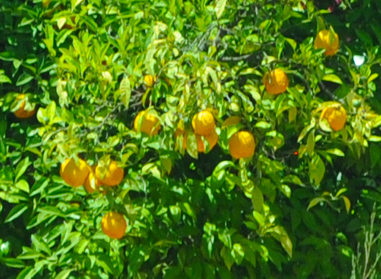 |  |
This great mosque in Cordoba is the third largest in the world. It dates back 12 centuries, having been begun between 785 and 787AD by Adb al Rahman I. It evolved over the centuries, blending many architectural forms. In the 10th century the elaborate mihrab was added. In the 16th century a cathedral was built near the center of the massive structure, destroying part of the original structure and reconsecrating the structure as a Christian cathedral.
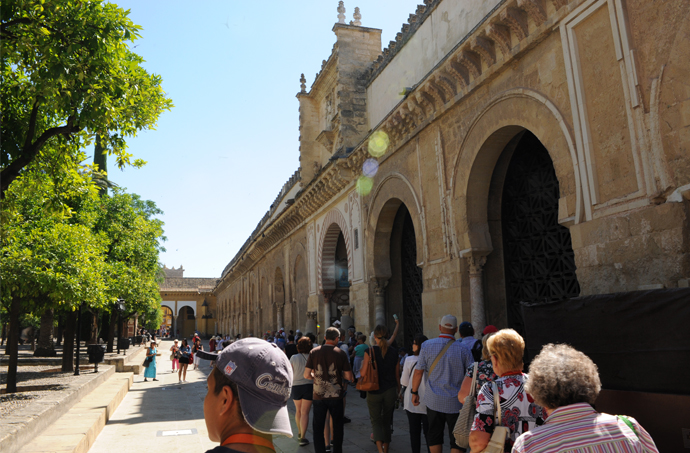 | Our English-speaking group is now inside the walls of the Mezquita in the large courtyard. The Patio of the Oranges is on our left. Abd al Rahman I built the original mosque between 785 and 787AD. Three extensions were made, the last being started about 990ad by Almansur and bringing the structure to its present size. |
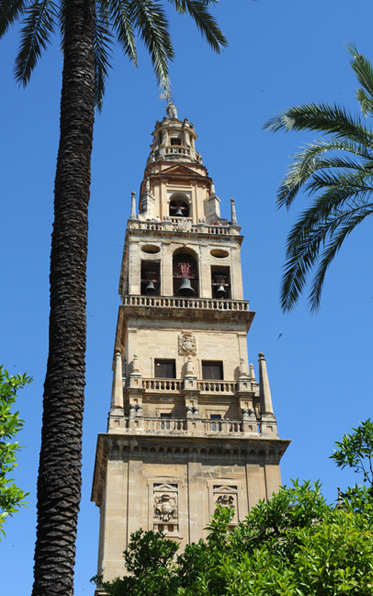 |  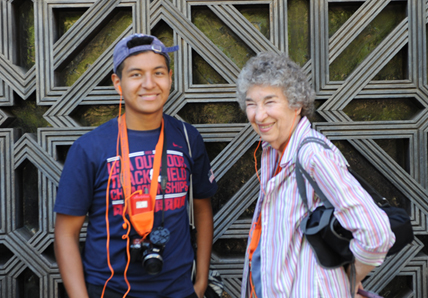 |
 | 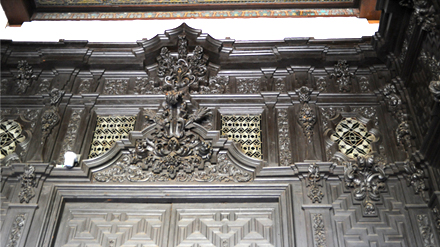 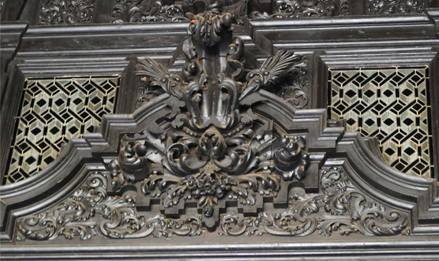 At left is the entrance door into the Mosque. Inside was this ornate door decorated with carved wood. |
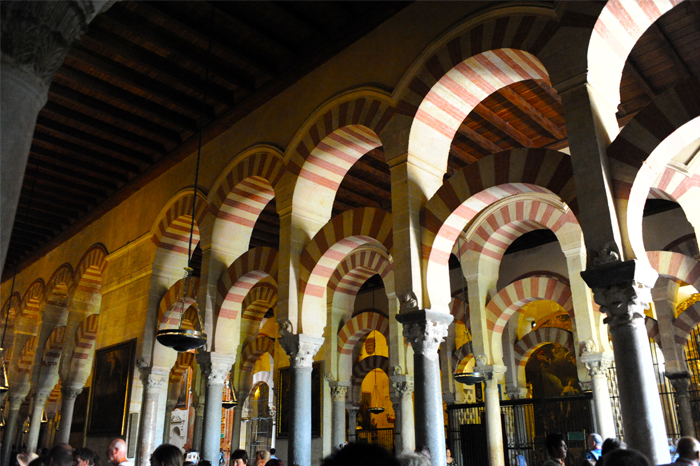 | Once inside we saw our first sample of the famous columns and arches. The guidebooks say there are 856 arches remaining from the maximum of over a thousand before the Cathedral construction removed a number of them. |
Shot at almost a right angle from the view above, this helps show the vastness of the interior that is supported by these columns. One source described this as a "forest mosque" where the column collection evoked peaceful meditation. | 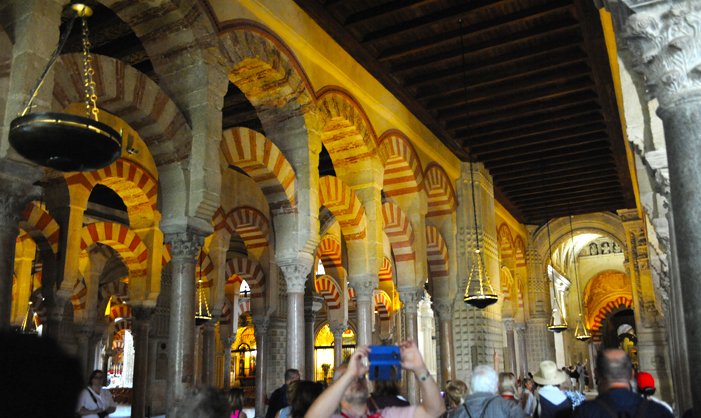 |
 | The arches were made from recycled material from Roman and Visigothic buildings, making the task of uniformity more challenging. The material includes granite, jasper and marble. |
Some areas of the arches have these more decorative arched ceilings. Outside this area you see figures, which tells you they are from the Christian era. Note that the bases for the columns in this and the two photos above are all different. | 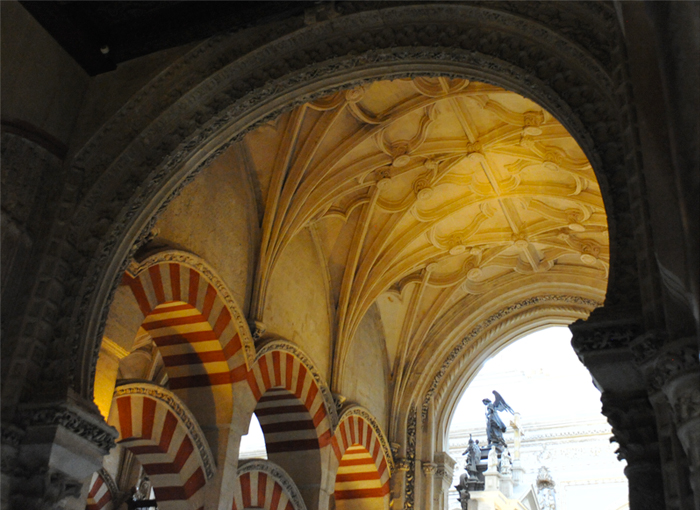 |
The Mihrab
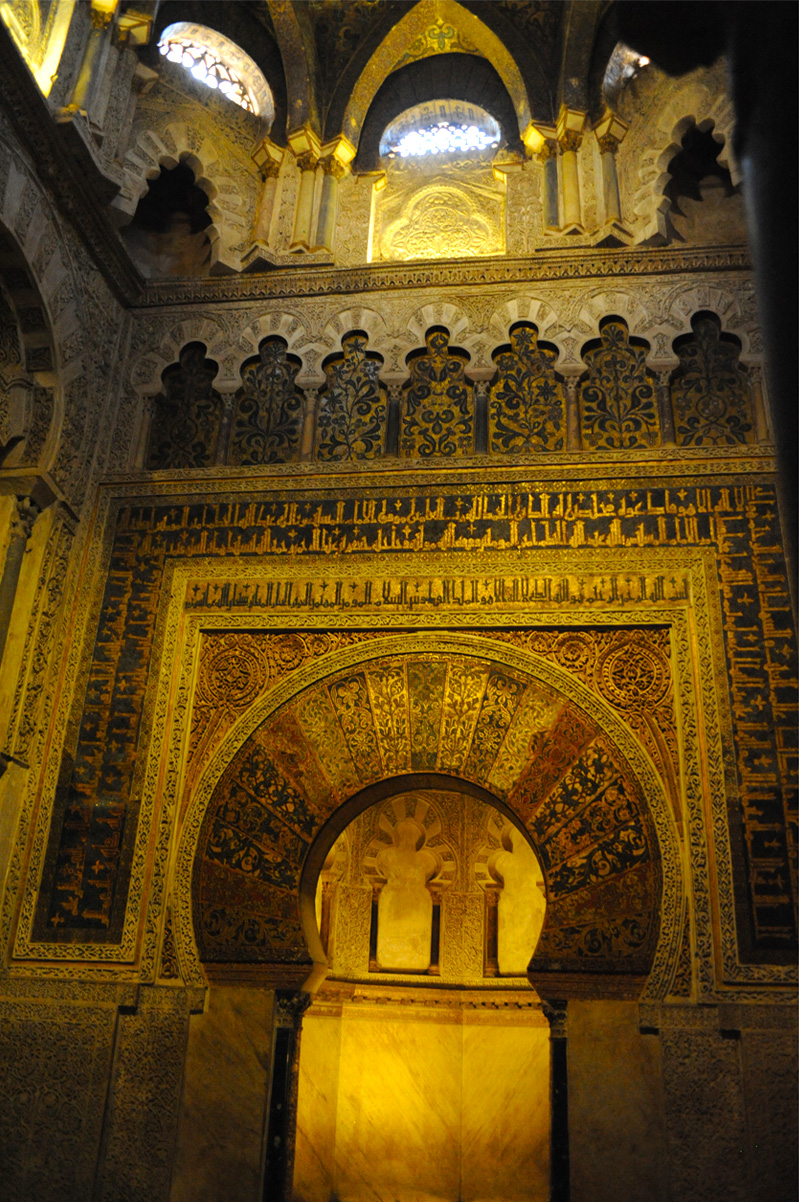
This is the Mihrab of the Mezquita. Mihrab translates to "prayer niche". It is used in a mosque to identify the wall that faces Mecca - the birth place of Islam in what is now Saudi Arabia. This is practical as Muslims face toward Mecca during their daily prayers. The mihrab in the Great Mosque of Cordoba is framed by an exquisitely decorated arch which is described as a "horseshoe arch". It is the kind of arch used by the visigoths. Intricate calligraphic bands adorn the arch with phrases from the Koran. The forms of these bands are called tesserae, forms of small pieces of glass with gold and color backing.

This is the dome that stands over the Mihrab.
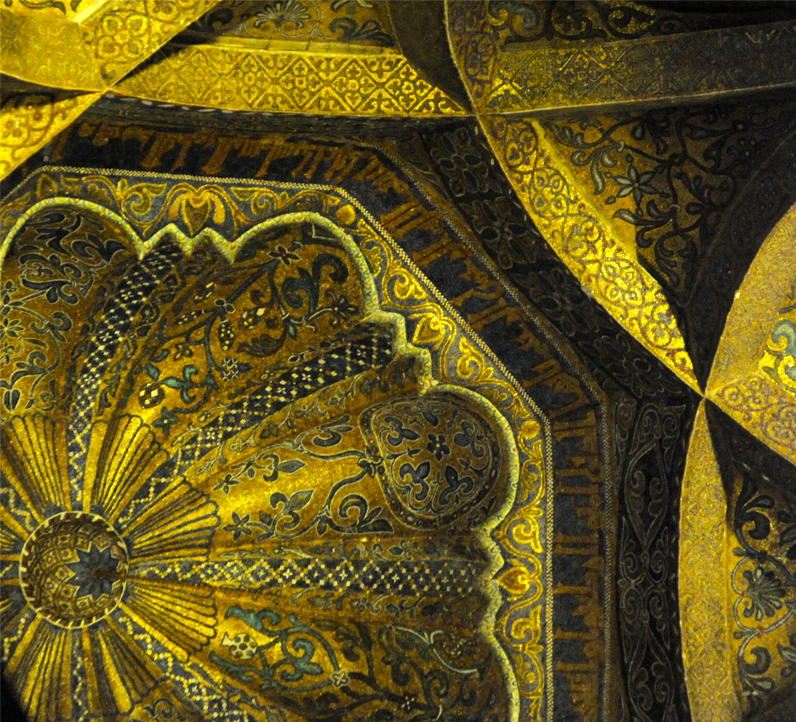
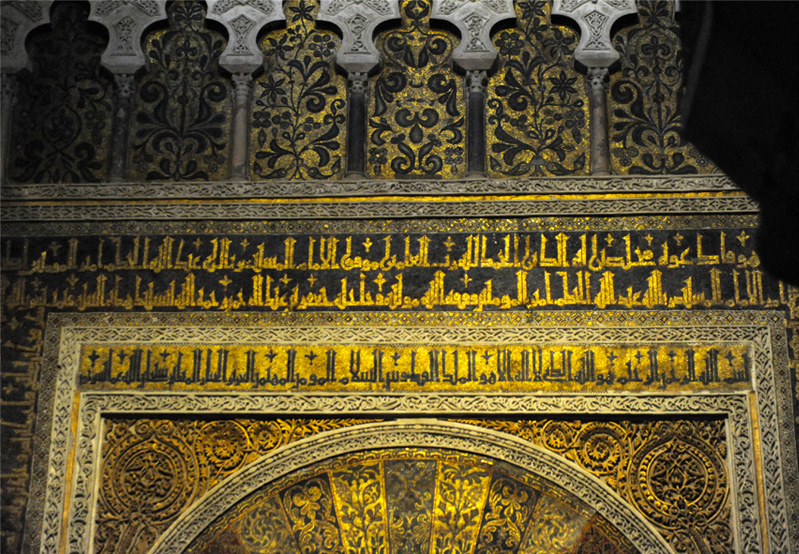
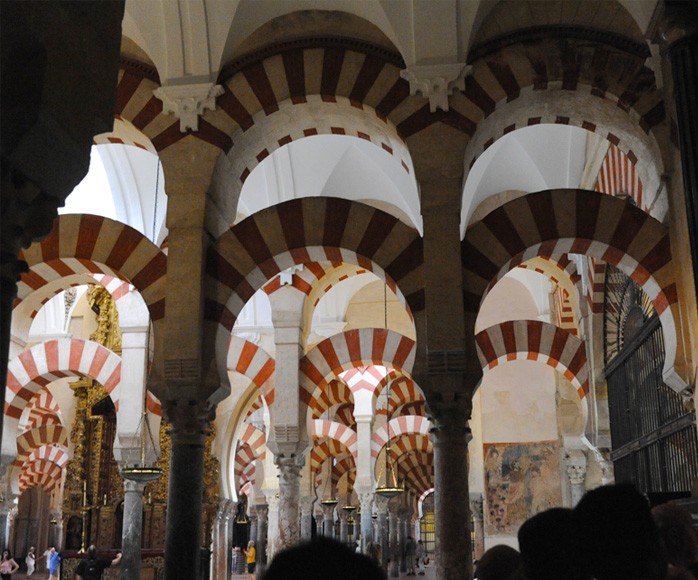 | After viewing the Mihrab, we continued through the great hall of decorative columns. |
These columns form a great hall. Note that two of the columns have sculpted writing on them. | 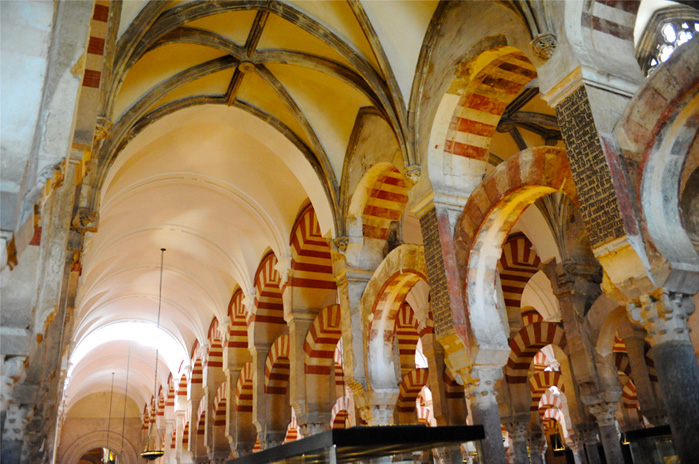 |
 | We moved through this final area of the large columns and approached the cathedral. |
| The Cathedral |
2017